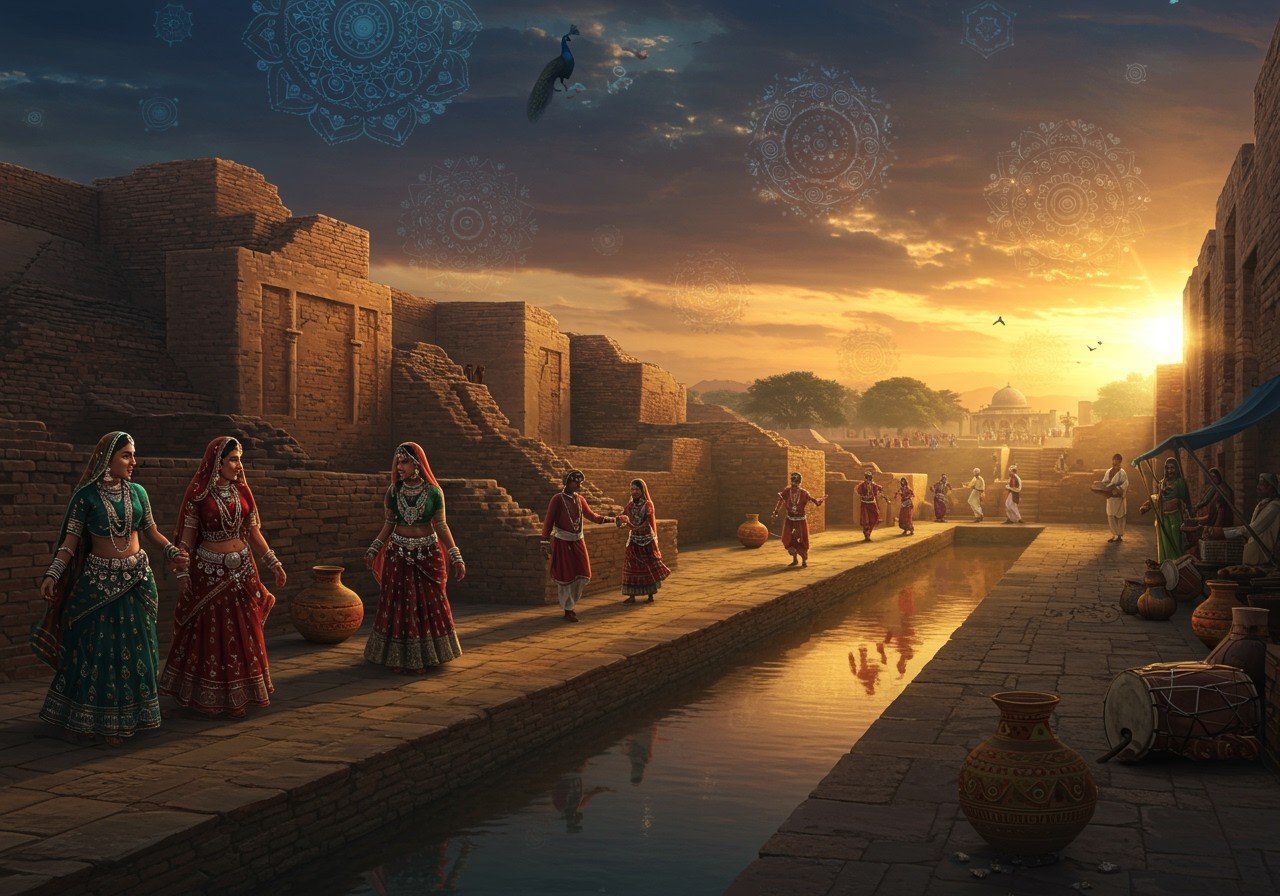
Sindh, a province in southeastern Pakistan, boasts a rich history spanning millennia. Bordered by Balochistān, Punjab, Rajasthan, Gujarat, and the Arabian Sea, its name originates from the Indus River, locally known as Sindhu. This region has witnessed the rise and fall of civilizations, absorbed diverse cultural influences, and evolved traditions that continue to shape its identity. This exploration delves into Sindh’s ancient roots, cultural heritage, and historical milestones, offering insights into its enduring legacy.
Ancient Civilizations
Sindh’s history is interwoven with ancient civilizations. The Bronze Age Indus Valley Civilization thrived here from around 3000 B.C., declining approximately 1000 years later. Mohen-jo-Daro, a major city of this civilization, showcases advanced urban planning, architecture, and drainage systems. This era signifies Sindh’s early contributions to human development.
- Archaeological Discoveries: Excavations at Mohen-jo-Daro, a UNESCO World Heritage site, have unearthed remarkable artifacts, revealing insights into early urban settlements, sophisticated craftsmanship, and daily life during the Indus Valley Civilization. These discoveries continue to reshape our understanding of ancient history.
- Trade and Commerce: The Indus Valley Civilization engaged in extensive trade with regions like Mesopotamia, exchanging goods such as precious stones, textiles, and pottery. This trade fostered cultural exchange and contributed to the region’s economic prosperity.
- Technological Advancements: The civilization demonstrated remarkable technological prowess, with innovations in metallurgy, pottery, and the development of a still-undeciphered script. These advancements highlight their ingenuity and sophisticated understanding of their environment.
- Decline: The decline of the Indus Valley Civilization, circa 1900 B.C. remains a subject of ongoing research. Theories include environmental changes, shifts in river courses, and possible invasions, showcasing the complex factors that shaped ancient history.
Medieval and Colonial Eras
The medieval period marked the arrival of various dynasties and the spread of Islam. Muhammad bin Qasim’s conquest in 711 CE introduced Islamic culture and governance, significantly impacting Sindh’s social and political landscape. Later, the British colonial period, beginning with Sindh’s annexation in 1843, brought further transformations in governance, infrastructure, and economy.
- Dynasties and Influences: From the Soomra and Samma dynasties to the Mughal Empire, Sindh experienced diverse rulers and cultural influences, each leaving its mark on the region’s architecture, administration, and social fabric. These influences contributed to Sindh’s unique blend of traditions.
- Architectural Heritage: Mosques, tombs, and forts from this era reflect Persian, Central Asian, and local architectural styles. The Shah Jahan Mosque in Thatta stands as a testament to the Mughal influence on Sindh’s architectural heritage.
- Colonial Impact: The British introduced modern agricultural practices, irrigation systems, and transportation networks, including railways and ports. These developments had a lasting impact on Sindh’s economy and infrastructure.
Cultural Heritage
Sindh’s vibrant cultural heritage reflects its diverse history. The Sindhi language, with its rich literary tradition, plays a central role in preserving cultural identity. Traditional music, dance, festivals like Cheti Chand, and intricate craftsmanship further showcase the region’s artistic expression and cultural richness.
- Sindhi Language and Literature: Sindhi literature, with notable works like Abdulhalīm Sharar’s “Tarikh-e-Sindh,” offers valuable insights into the region’s history and cultural evolution. This literary tradition continues to thrive, preserving and celebrating Sindhi identity.
- Arts and Crafts: Sindhi artisans excel in textile weaving, pottery, and jewelry making, showcasing intricate designs and traditional techniques passed down through generations. These crafts reflect Sindh’s artistic heritage and cultural continuity.
Poojn.in: Connecting with Sindh’s Spiritual Heritage
Poojn.in, India’s leading cultural goods and services store, offers a wide selection of products to connect with Sindh’s spiritual traditions. Explore authentic puja items, religious artifacts, and learn more about Sindhi Hindu rituals through informative blog posts. Visit poojn.in to discover more.
- Traditional Puja Items: Discover traditional clay pots, diyas, and other essential items for Sindhi puja ceremonies. Poojn.in offers a curated collection to support your spiritual practices.
- Sacred Offerings: Find authentic kumkum, roli, and other sacred offerings for traditional Sindhi rituals. Explore our collection to enhance your spiritual experience.
Conclusion
Sindh’s history is a testament to its resilience and adaptability. From the ancient Indus Valley Civilization to the influences of various empires and the colonial era, Sindh has continuously evolved while preserving its unique cultural essence. Exploring its heritage offers a deeper understanding of the region’s vibrant past and its enduring legacy.


